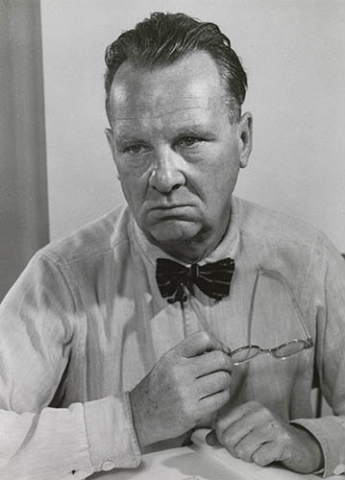On April 1, 1928 Willi Baumeister pursued his call to the Municipal School of Applied Arts (Städelschule) in Frankfurt. He was initially hired as a lecturer for the field of commercial graphics, typography, and fabric printing. He certainly would have welcomed taking on the painting class as well. This, however, was taught by Max Beckmann. In November Baumeister was awarded the title of professor. In the same month - with the arrival of his wife Margarete in Frankfurt - Baumeister began making regular diary entries, which he continued to do until his death. On December 23, 1928 their first daughter Krista was born.
In February 1929, Baumeister had a solo exhibition at the renowned Berlin Flechtheim gallery, which would have been hardly conceivable without the Stuttgart successes and 1927 Paris exhibition. In November his most recent works were show by Gustav Kahnweiler in Frankfurt.
Baumeister Plays an Important Role in the Art Scene
In 1930, together with other artists - including Wassily Kandinsky and Kurt Schwitters - he became a member of the artist association Cercle et Carré. During this year there were further exhibitions once more in Paris.
In May 1930, on occasion of the Stuttgart Künstlerbund-Ausstellung, Baumeister received the Württemberg State Prize for his painting “Linienfigur” (Line Figure). In 1931 Gallimard in Paris published a small monograph by Will Grohmann that was followed by another, published in Antwerp in the same year. Le Corbusier wrote to the artist accordingly: “Vous allez a l'avenir avec sécurité.” (You are going to have a secure future.) Also in 1931 Baumeister traveled to exhibitions in Berlin, Essen, and Frankfurt am Main. Many German museums purchased his paintings.
The End Emerges
Teaching and obligations related to the professorship became so demanding that he could only paint intermittently (Diary 1932). In December 1932 he showed at Galerie Cassirer in Berlin. It would remain his last exhibition in Germany until 1945!
When the Brüning governmen toppled in 1932, Baumeister spoke of the likely end of Germany's democratic era. At the beginning of 1933, under the rapidly changing political climate, the Frankfurt press increasingly campaigned against Willi Baumeister. On March 31, 1933 he eventually received notice without further explanation that his future teaching activity would be terminated. Following the dismissal, Baumeister returned to Stuttgart on March 7, 1933 where he initially earned his living mainly with commercial designs. Even though he was not subject to an occupational ban, public activity as an artist became unthinkable for a long time then.
On April 26, 1933 the second daughter Felicitas was born. And despite the depressing political and personal circumstances, he soon resumed his artistic activity with unchanged intensity.
Just a year before, Willi Baumeister could not have imagined that the coming years until 1945 would take place under completely changed artistic and economic circumstances.



